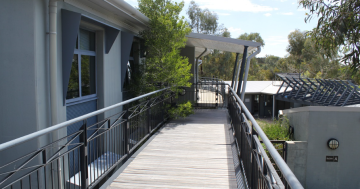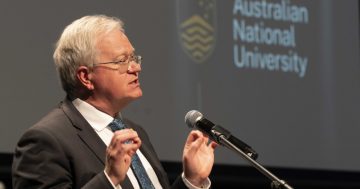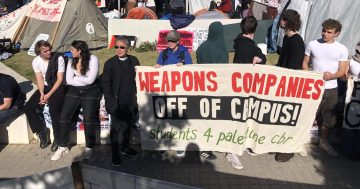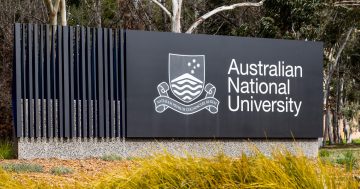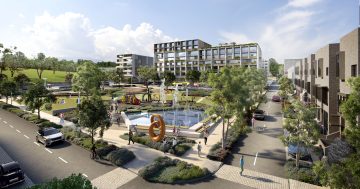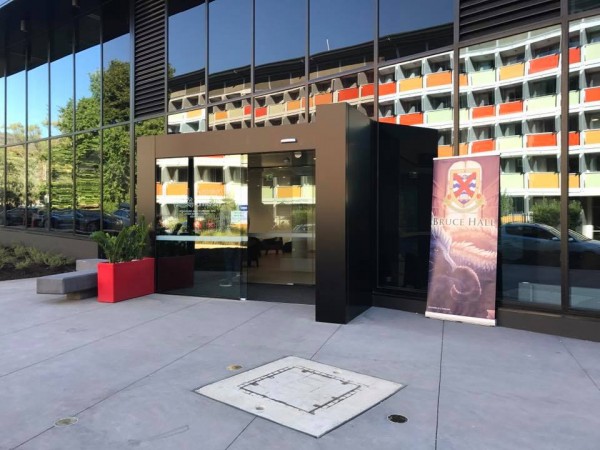
ANU student residence Bruce Hall’s motto is “Felix Qui Potuit Rerum Cognoscere Causas” or, for the non-Latin scholars among you, “Happy is he who is able to discover the reason for things”.
Many Bruce Hall alumni and residents have struggled to come to terms with the university’s plans to demolish their much loved original building at the top of University Avenue later this year. They have been unable to discover the reason for the move (to their satisfaction), even as Bruce Hall residents settle into sparkling new temporary digs further along Daley Road at SA5, a $53 million student residence on campus that was built in a year so it could be ready to house them until their new permanent premises are ready to be the envy of the world in two years. SA5 will be provided with its own name and identity as a future college thereafter.
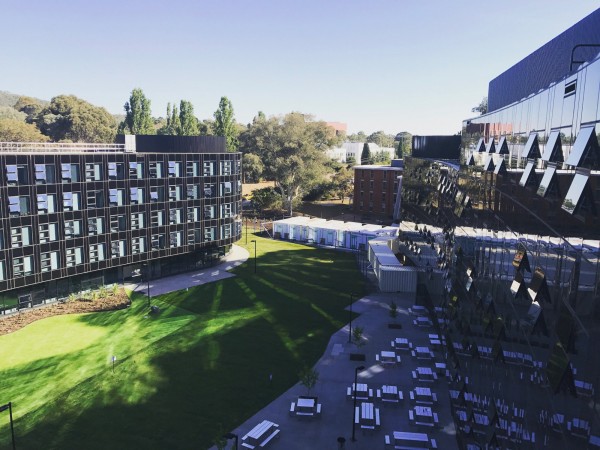
I loved the fact that the ANU Vice-Chancellor Brian Schmidt made sure enough of the students were on hand for the opening of SA5 this morning by waking them all with a fire alarm at 7am.
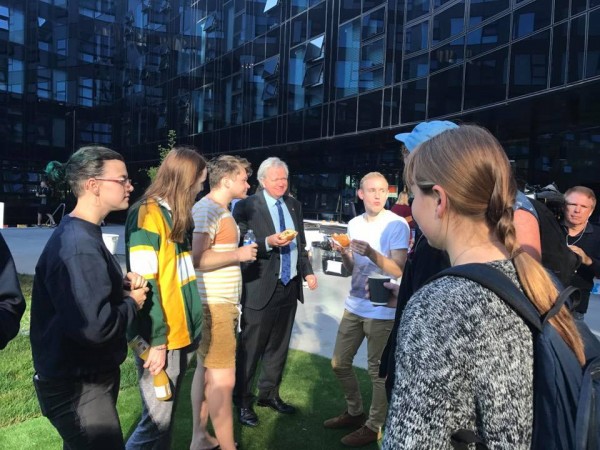
Dozens of them did the right thing and came out to share a breakfast burger moment with Professor Schmidt. The VC apologised for the fire alarm tactics during his speech, and noted that he kept bottles of champagne on hand when he was a college student “because that made it all worthwhile when the fire alarm went off in the middle of the night”.
“There was the time there was nine fire alarms, that was not so good the next day,” Professor Schmidt said.
Jokes aside, it’s understandable that supporters of the Save Bruce Hall campaign are upset about the impending loss of their original home.
Bruce was the first undergraduate residence built at the ANU, in 1961. It was also the first co-educational hall of residence in an Australian university. Hundreds of students have resided at Bruce while studying at ANU over the years, embracing the college’s tradition of striving for excellence in sports and the arts, and for encouraging each resident to achieve their own personal best in all aspects of life.
Proud residents have for decades represented Bruce in interhall sports from hockey to cricket and even ultimate frisbee. They’ve competed for glory in the spheres of music, literature, debating, public speaking, theatre and art in the Interhall Arts Shield. They’ve shaven their heads and grown moustaches en masse for charity. They’ve donned togas in O Week, painted in the Art Room and sculled beer in Bush Week, feasted and danced together in the Main Dining Hall, partied in the Buttery and debated college policy in the Common Room.
But do they need an ageing, asbestos-filled building to remain in place forever to celebrate and represent their community? A building that is costly for the university to heat and cool, and expensive to maintain?
Do they really want to retain the frankly rather plain and dated facility that housed Bruce’s cohort till now given the fact that Bruce Hall alumnus Graham Tuckwell and his wife Louise have donated $100 million to the university to build an absolute state of the art facility to replace it by 2019?
Yes, it’s sad to see the original building go, but if the university follows the recommendations of a November 2016 Heritage Impact Statement put together by planning consultant Paul D. Cohen of Campbell Dion, many of the college’s treasures will be retained.
Mr Cohen acknowledges the relationship between some alumni and the existing buildings, but argues that “the societal values attributed to the College are not place dependent. They are reliant on interpersonal relationships, and loyalties between persons and institutions, qualities that do not stand or fall on any particular location or place.”
“With respect to the alumni, it is respectfully suggested that the most important associational values relate to the internal strength and coherence of the alumni itself,” he writes.
The consultant believes that the importance of the traditions of the college to residents past and present reinforces a need to preserve its symbols and history “to secure Bruce Hall’s place in the history of the campus”.
“While visits to the campus for special occasions would be expected to evoke considerable nostalgia, the preservation of iconic and significant objects and records, and clear echoes of the original architecture in new buildings will assist the alumni to retain its memories of the former Hall,” he continues.
The new building could, for example, incorporate “significant expressed arches in the dining hall, reuse of the Fred Ward furniture and/or its replication, relocation of the dining hall end wall, and Leonard French art and retention/relocation of the Flugelman sculpture.”
“A properly curated exhibition of plans, photographs, models and furniture could be maintained in part of the new complex,” Mr Cohen writes.
The consultant advocates for retention of the existing names of wings, too.
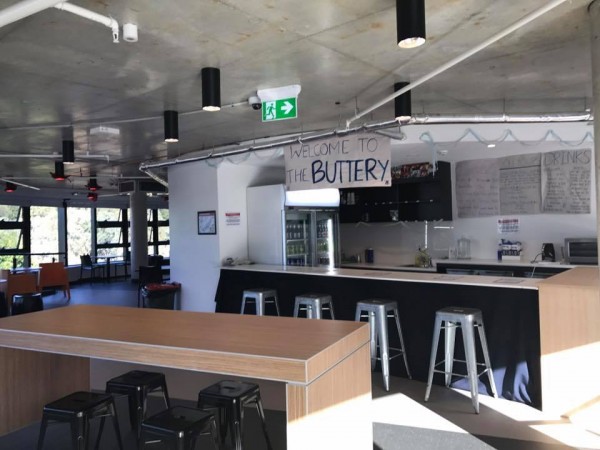
ANU Vice-Chancellor Brian Schmidt has a vision for the university that any student who wants to live on campus should be able to do so. He shares the Tuckwells aspiration that ANU students, and particularly residents of Bruce Hall, should be well-rounded individuals who strive to succeed in extra-curricular activities as well as academically. Professor Schmidt and the Tuckwells believe that providing ANU students with world class accommodation facilities in the tradition of Bruce Hall will provide them with the best opportunities to flourish.


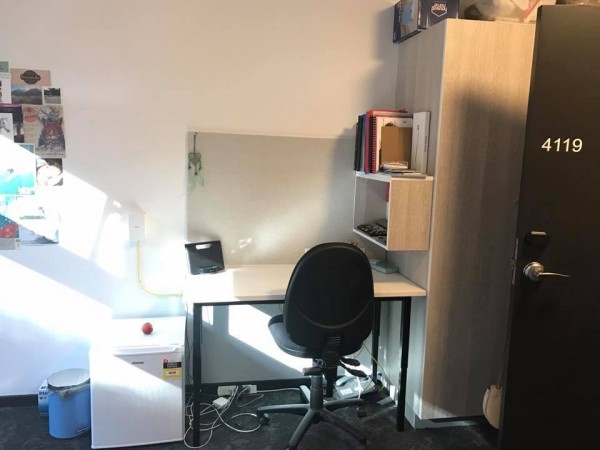
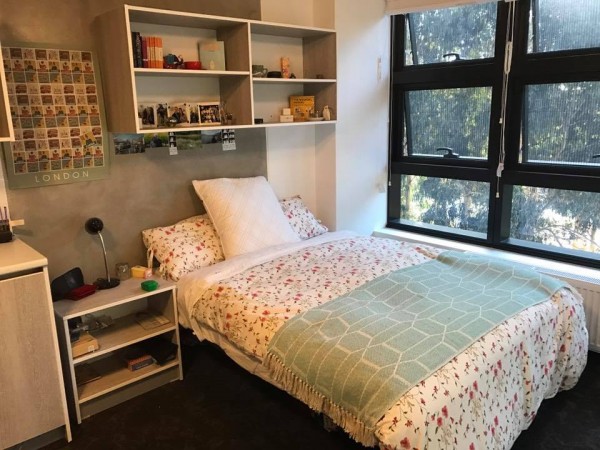
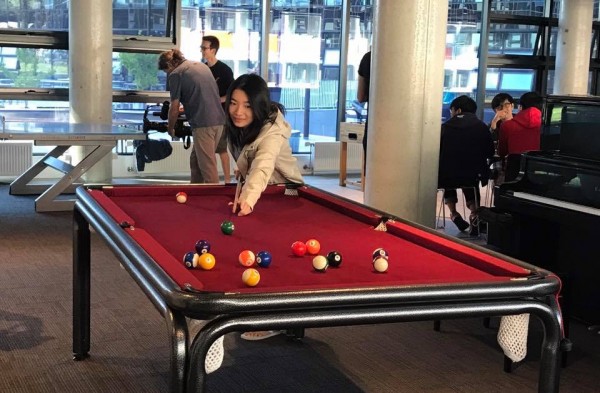
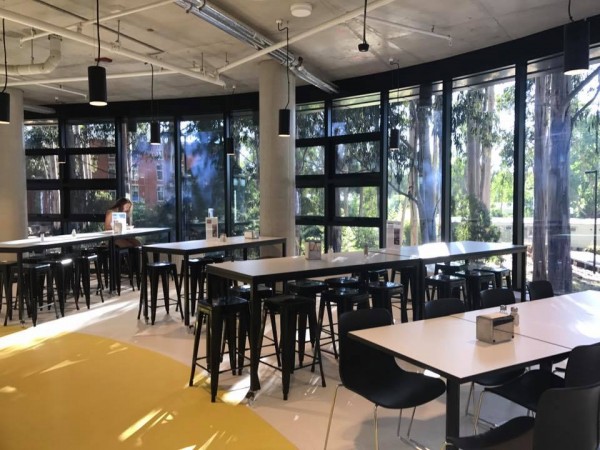
It’s time for the Save Bruce Hall campaigners to acknowledge that there are reasons for these things (these things being the decision to upgrade Bruce Hall’s facilities, and those reasons being the inadequacy of the existing building to meet students and administrators’ needs). It’s time for them to stop whinging on social media and start working with the university to ensure that the heritage and history they care so deeply about is incorporated into the new Bruce Hall in a way that celebrates much that they hold dear about their college experience.
Pictured are several views of the new SA5 facility that will be home to Bruce Hall students for two years. Photos: Charlotte Harper
Charlotte Harper was an ANU student between 1990 and 1994 but did not live on campus.













